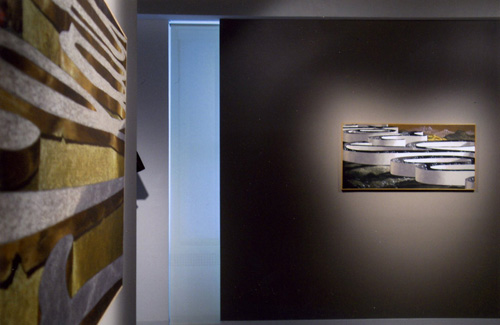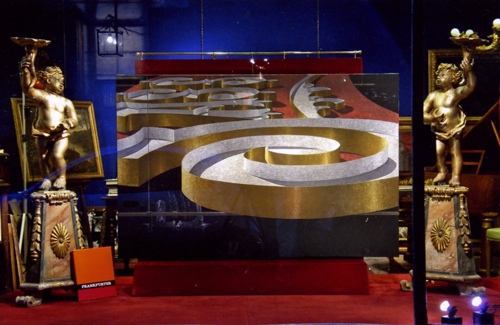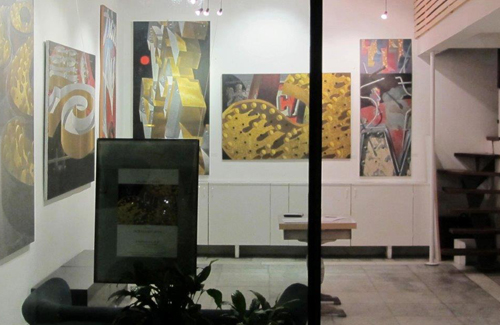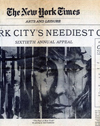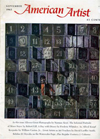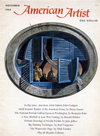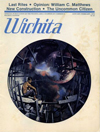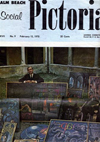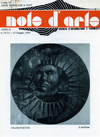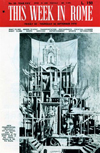Current Paintings | Paintings: 1980-1997 | Rome & Italian Experience | Rome; India; New York | Scenography & Displays | Contact and Resumé

View paintings, click sections above. |
 |
|
Jack Frankfurter Born: Vienna, Austria, 3/25/29 Experience: Teaching - University of Auburn, Auburn, Ala.; Design - Tiffany & Co. New York; Photography - The Ladies' Home Journal, New York Art Training: Cooper Union, N.Y.; Accademia Delle Belli Arte, Rome, Italy;
Galleries 18 East 79th St. New York, 10075 - By Appointment
Antichita di Filippo Via tor Sanguigna 1/3 00186 • Rome, Italy • 00186 • 39-06-686-5139
Galleria "Le Opere" Via di Monte Giordano, 27 • Rome, Italy • 00186 • 39-06-66-813-6100
| ||
Exhibitions |
||
|
Galleria 88, Rome. 1960-1972 Annual Exhibitions Galleria La Zagara, Naples, Italy, 1960 Country Art Gallery, Locust Valley, NY, 1961, 1963, 1970 Piccola Barcaccia, Cagliari, 1968 Wally Findlay Galleries, New York, 1974, Palm Beach, 1975 Kama Studio, Rome, 1975 Galleria Doria, Porto Ercole, 1975, 1977, 1980 Galleria Ca' D'Oro, Rome, 1975, 1979, 1983, 1985, 1991, 2001 Alwin Gallery, London, 1969, 1972 Springfield Museum of Fine Arts, Springfield, MA, 1970 Palm Beach Gallery, Palm Beach, FL, 1970 Galleria Arno, Florence, Italy, 1973 Bodley Gallery, NY, 1976 Mickelson Gallery, Washington, DC, 1976 Janice Throne Gallery, Springfield, MA, 1971, 1974 The Gallery, Beverly Hills, CA, 1977 Galleria Cortina, Milan, Italy, 1983 Galleria Medusa, Rome Tiffany and Co. NY, 1990, 1992 Empire State Building Gallery, NY, 1994 Galleria "Le Opere", Rome, IT, 2011 Galleria "Le Opere", Rome, IT, 2013 Important Group Exhibitions: | ||
| X Quadriennale d`Arte di Roma Edwin Hewitt Gallery, NY Galleria Del'Obelisco, Roma Galleria Doria, Porto Ercole Galleria Giulia, Rome Peter Marcelle Gallery, NY Gerald Wunderlich Gallery, NY Kennedy Galleries, NY Peter Findlay Gallery, NY Feingarten Gallery, Chicago Palazzo Strozzi Exhibitions, Florence Magidson Gallery, Aspen Galleria Il Canovaccio, Rome Roko Gallery, New York Obelisk Gallery, Washington, DC |
Galleria La Margherita, Rome |
Museums and Principal Collections: |
|
Whitney Museum Annuals, NY Wichita Art Museum, Wichita, KS Springfield Museum of Fine Arts, Springfield, MA University of Cincinnati Art Museum 10th Quadriennale d'Arte, Rome Biennale d'Arte, Lignano, Italy Museum of the Four Arts, Palm Beach, FL The Hempstead Bank of Long Island Julius Fleischmann Collection The Olivetti Collection |
|
Selected Collectors: |
|||
|
Joan Whitney Payson |
Marisa de Perosch |
Le Comte Henri de Baumont |
Principessa Margherita Rospigliosi |
|
Recognitions and Critics: |
||||
|
Critics: Exerpts | ||
Italiano |
English |
|
Mario Praz: |
Introduzione al catalogo, Ca' D'oro, 1968 |
|
In the past the romantic painters of Rome limited themselves to re-arranging monuments in rich and unusual perspectives. Frankfurter took his inspiration from another concept of the vedute. He constructs an ideal Rome where fragments of reality, the residue of every day life, create bizarre discords and surrealist effects of anticlimax. This kind of interpolation is essentially modern and delights in dramatic dissonance. Yet in these paintings the spirit of the Baroque triumphs where not only elements of the seventeenth century serve as paraphernalia in bold images, but also banal aspects of the modern world are interpreted in baroque terms. He searches the entire universe for his magical and melancholy divertissements. And if the anguish of solitude were not beneath the interplay of appearances, he would not be truly modern. |
Nel passato i vedutisti fantastici di Roma si limitavano a raggruppare i monumenti in ricche, insolite prospettive. Frankfurter s'e ispirato da un diverso concetto della vedutistica: costruisce una Roma ideale, elementi reali, frammenti e residui della vita quotidiana, creando bizzarre dissonanze e effetti surreali di anticlimax. Questo genere di interpolazione é essenzialmente moderno e si diletta in ardite stonature. Ma lo spirito barocco trionfa in queste tele; e non solo elementi della scena settecentesca servono di paraphernalia a queste ardite scenografie, ma aspetti anche banali del mondo moderno sono interpretati in senso barocco. Recluta tutto l'universo pei suoi divertimenti maliosi e melanconici. Che egli non sarebbe veramente moderno se dietro al giocco delle apparanze non vanegiasse l'angoscia della solitudine. |
|
Dario Micacchi: |
L'Unitá, (Roma) 11 Ott 1985 |
Frankfurter, an affectionally analytical artist, though not truly illusionistic wants to render credible the most un-imaginable urban scenes. With incredible and often surreal combination of ruins and destruction, he mounts his Roman or New York images with with scenografic inventiveness, with a discerning eye and often ironic vision. At times his cities seem like broken, dismembered and re-composed toys one can't play with any more. The scrambling of these urban fragments is indeed "mad". Speaking for all his paintings is that little masterpiece, portrait of Marilyn and the two boys leaning against the American eagle, titled "Symbols". Our preferences also go to paintings like those of huge advertising signs to that beautiful, hyper-melancholic painting of a little Italy depicting a family and the photographer's camera, and again to that painting of desolate urban decay with a boy pushing another in a broken baby carriage: spectral images and indescribable anguish without the slightest trace of false sentiment. |
Frankfurter é un pittore analitico per passione, ma non é illusionista: piuttosto vuol rendere credibile le scene urbane piú immaginifiche. Con i suoi incredibili e spesso surreali accostamenti di rovine e di ruderi si conferma l`inesauribile invenzione scenografica con la quale il pittore monta le sue immagini romane e newyorkesi con occhio molto analitico e talvolta ironico. Talora le sue cittá sembrano balocchi smontati e rimontati con i quali non si puo` giocare piú. Gli assemblaggi di frammenti urbani americani sono davvero "pazzi" e parla per tutti quel piccolo capolavoro, col ritratto di Marilyn, e i due ragazzi che si riposano poggiati all'aquila americana. La nostra preferenza va a dipinti come quelli con le insegne luminose, al bellissimo ipermalinconico quadro della little italy con la famiglia e la macchina dal fotografo, e ancora a quel quadro desolato di sfacelo urbano col ragazzo che spinge la carrozzella: immagini spettrale e di un'angoscia indicibile, dipinta senza una sbavatura sentime |
Diego Fabbri: |
Introduzione catalogo, C'a D'Oro, 1989 |
I tried to imagine the artist arriving in Rome and consider his visceral relations to this city luxuriant in baroque decadence: the monumental ruins in scaffolding, and hopeful supports rising around decrepit remains of works obviously wasted away but not yet quite gone. Frankfurter appears to be a sleepless and desperate saviour who breaks in to stop this consumption and ruin as he attempts a kind of resurrection and rebuilding by virtue of a new image. For this he does indeed create a "new image", as if the painting conceived from this could perhaps be the arcane breath of a new life. Frankfurter achieves this with the innovation of engulfing light from the sun's rays on the whiteness of suspended sheets, on unusual objects, floating angels and statues, or on an isolated baroque capital, twisted and magnified. It seems that the solitary artist goes in search of a new stimulus of yet unknown seasons that speak to him alone. It is his gift as untiring artist that he finds lasting freshness in some deep roots of antiquity even when the object of admiration and love are the ruins. |
Ho provato a rivedere l'artista sbarcato a Roma e a considerare le sue viscerali relazioni con questa citta` rigogliosa di barocco decadente: rovine monumentali circondate da impalcature, supporti che guardano al futuro anche se innalzati attorno a decrepitezze di opere senza dubbio consunte ma non ancora morte. Frankfurter mi é cosi' apparso come un insonne e disperato salvatore che irrompe a fermare consunzione e rovina per tentarne una sorta di risurrezione e di riedificazione in virtu' di nuovi immagini. Quasi che la "nuova immagine", il quadro di li' ricavato, fosse l'infusione arcana di un'altra vita. Con l'immissione di nuovi golfi di luce, di palme di sole, di sospesi lenzuoli di candore, di strumenti inconsueti e rari, di penzolanti angeli e statue, di isolati capitelli barocchi, lavorati e ritorti e ingigantiti...sembra, adesso, che vada solamente alla ricerca di nuovi stimolanti modelli, di stagioni sconosciute, di etá riscoperte che parlano solo a lui. Ha il dono particolare di essere in pittura l'artista solitario che sa trovare la perenne giovinezza di un strato profondo dell`antichitá. Anche quando l'oggetto dell'ammirazione e dell'amore sono le rovine. |
Franco Simongini: |
Il Tempo, (Roma) 24 Ott. 1984 |
The artist returns from a New York seen in new perspective which is reflected in these canvases, not without nostalgia, but with an ironic, even cynical vision. Frankfurter now exhibits a series of typically American paintings, or more pointedly, showing the country in all its dazzling consumistic myth, even bad taste, that lives in the fleeting light of remembrance. His canvases reveal an America crystallized to quintescence not as by a native, but as seen with the eye of a visitor striken by the Statue of Liberty, Marilyn, Mickey Mouse, the gambling tables and electric lights of Las Vegas, the Empire State Building---all elements found in a large painting with the significant title: Symbols, clearly emblematic and almost a manifesto of American life today. There is no doubt that his paintings also reflect his theatrical experience as scenographer for major Italian and foreign directors. |
L’artista ritorna dall’ultimo soggiorno in America con una nuova prospettiva che si rivela in queste ultime tele piuttosto che ironica addirittura cinica; tuttavia non priva di una sottile nostalgia. Frankfurter espone ora una serie di quadri tipicamente americani, o meglio dove l’America nel suo sfolgorante mito consumistico, e nel suo cattivo gusto vive nella sottile, maliziosa e anche perfida luce del ricordo; un’America ridotta alla quintessenza, vista con l’occhio piuttosto dell’indigeno che dello straniero colpito dalla statua della Libertà, da Marylin, da Topolino, dai tavoli da gioco di Las Vegas e dalle sue insegne luminose: elementi che compaiono tutti in un grande quadro dal titolo significativo, “Symbols, dichiaratamente emblematico, quasi un manifesto della vita americana odierna. Senza dubbio nella pittura di Frankfurter si sente l’esperienza dello scenografo che ha collaborato con i maggiori registi italiani e stranieri. |
Antonio Porcella: |
Introduzione mostra: Nouveaux Conteurs, Ca' D'Oro, Dic 2001 |
For Jack Frankfurter it's his Austrian heritage: Weltschmerz, Angst, Melancholie. Frankfurter narrates the loneliness, the silence and secret life of the lesser city with its forgotten corners that may draw the artist through past memories in search of a safe haven seen as refuge from an oppressive reality that threatens change and destruction of a loved and still vivid past. The key to the artist's works is nostaglia, a quality difficult to define, where entering dreams are shattered by contact with reality, illusions, memories... all critically filtered with pained, irony. |
É la sua ereditá austriaca: Weltschmerz, Angst, Melancholie. Frankfurter narra la solitudine, il silenzio e la vita segreta della cittá minore, degli angoli dimenticati, che puo essere lo spunto alla ricerca attraverso i ricordi del passato, di un approdo sicuro visto come rifugio da un presente oppressiva che minaccia cambiamento e distruzione contro le cose amate. La chiave di lettura del pittore é la nostaglia di una qualitá difficile da definire, dove entrano sogni infranti al contatto con la realtá, illusioni, memorie...il tutto filtrato criticamente, con dolente ironia. |
Lorenza Trucchi: |
Momento Sera, Roma, 18 Nov. 1967 |
For the connosseur---and there are many---of a certain figurative, meticulously detailed, descriptive and surreal type of painting, we recommend Jack Frankfurter`s exhibition at Galleria 88. One must give credit to Frankfurter for having so refined his gift, his "virtuosity," as to achieve rare effects of composition and luminosity.---In an "antique" interplay of composition the artist, today more than ever, hints at elements of anguish and suspense: an existential alarm particularly pertinent in today's world. |
Per i cultori---e sono molti---di un certo tipo di pittura figurativa, minuziosa, anedottica e surreale, segnaliamo la personale di Jack Frankfurter alla Galleria 88. Bisogna dare atto a Frankfurter di aver notevolmente affinato le sue doti di "virtuoso", cosí da raggiungere oggi dei rari effetti compositivi e luministici.---Nel gioco "antico" della composizione del pittore si insinua, oggi piu` che mai, un elemento di angoscia e suspence: un alarme esistenziale di sapore e di significato del tutto attuali. |
Critics: Excerpts in Original Language Charles Moses, Introduction to monograph: Frankfurter - Paintings, Agraf Art Editions, Rome, 1973 |
Kirk Semple, AP, Las Vegas, NV Review Journal, 6. Nov. 1990 |
Carlo Laurenzi, Il Giornale, (Firenze) 25 Giu. 1983 |
Renzo Tian, Il Messaggero, (Roma) 23 Giu. 1983 |
Berenice, Paese Sera, (Roma) 4 Lug. 1979 |
Antonio Porcella, Introduzione catalogo mostra: Ca' D'Oro, 16 Ott. 1976 |
Virgilio Guzzi, Il Tempo, (Roma) 15 Apr. 1976 |
John Hart, Rome Daily American, 1 Apr. 1976 |
Philip Dallas, The Tatler, (London) Apr. 1971 |
Arturo Bovi, Il Messaggero, (Roma) 19 Sett 1971 |
Lee Sheridan, Springfield, Mass, Daily News 22 Dec. 1970 |
Luigi Peverini, L'Avvenire, (Roma) 17 Lug. 1970 |
Arts Review (London) 24 May 1969 |
Renato Civello, Corriere di Sicilia, (Catania) 27 Nov 1966 |
Charles Moses, Introduction to catalogue, Galleria 88, 18 Nov 1965 |
Enrico Contardi, Vove del Sud, (Lecce) 28 Ott. 1961 |
Sterling McIlhany, Editor, American Artist Magazine, June 1961 |
Vito Apuleo, La Voce Repubblicana, (Roma) 7 No. 1961 |
Renato Giani, Il Quotidiano, (Roma) 14 Nov. 1960 |
Gian Gaspare Napolitano, Il Giorno, (Milano) 3 nov 1960 |
Carlo Barbieri, Il Mattino, (Napoli) 24 Dic. 1960 |
Edith Weigle, Chicago Daily Tribune 13 Dec 1957 |
Many critics and the media have reviewed Jack Frankfurter's work. They are too numerous to include here. |
